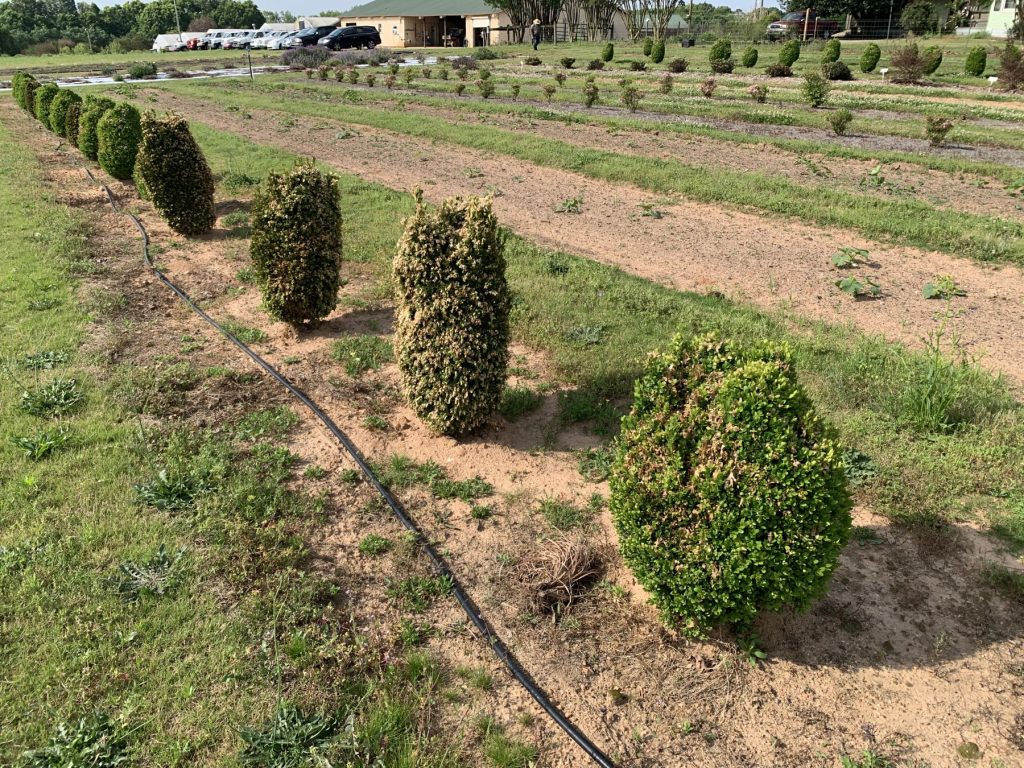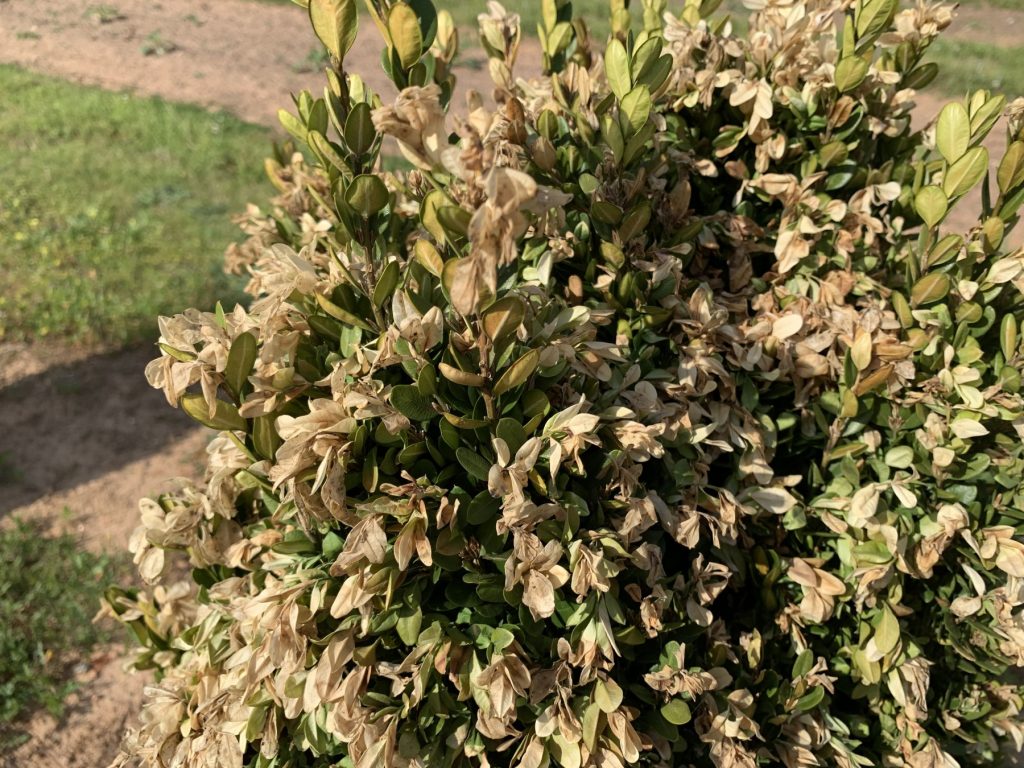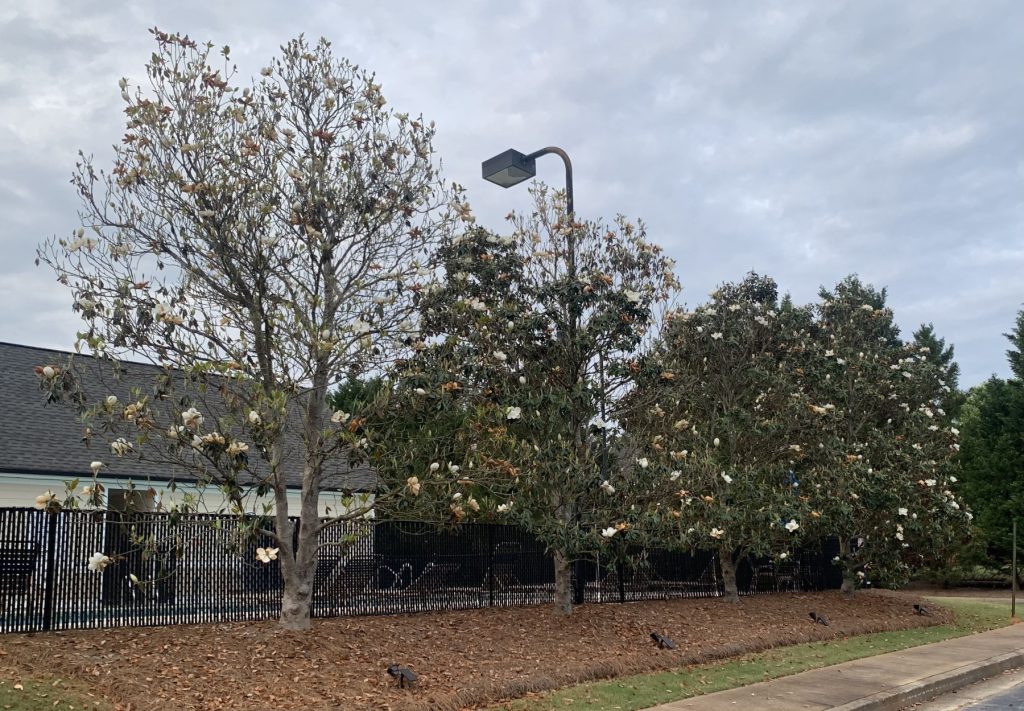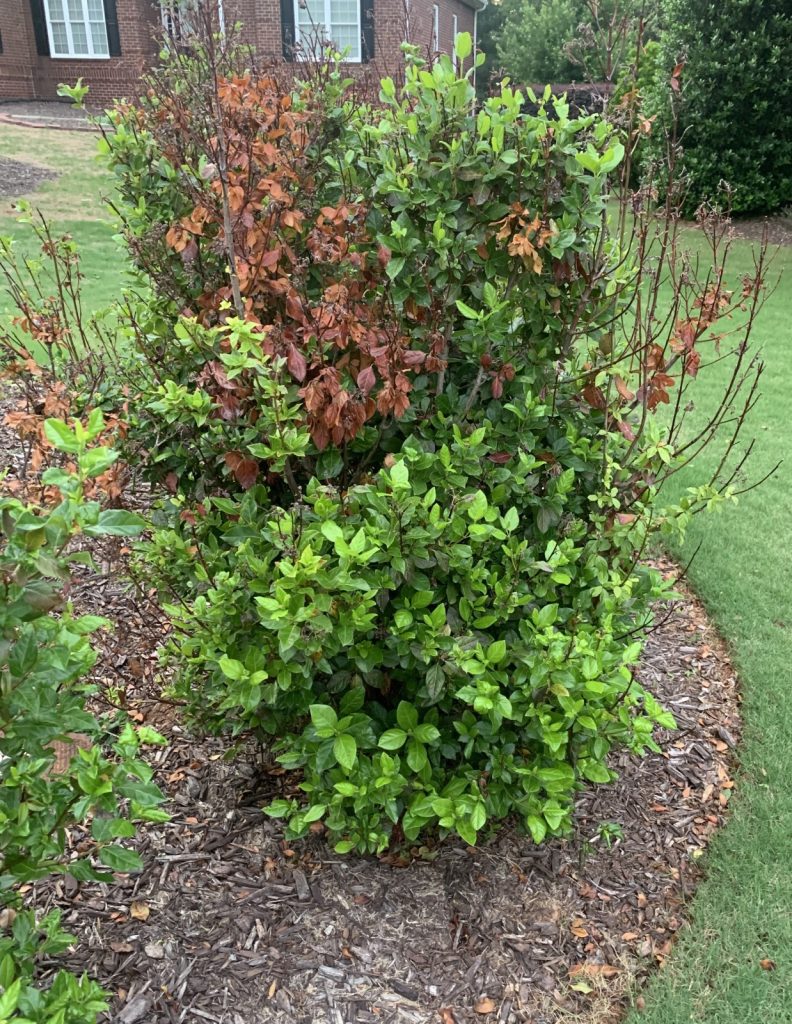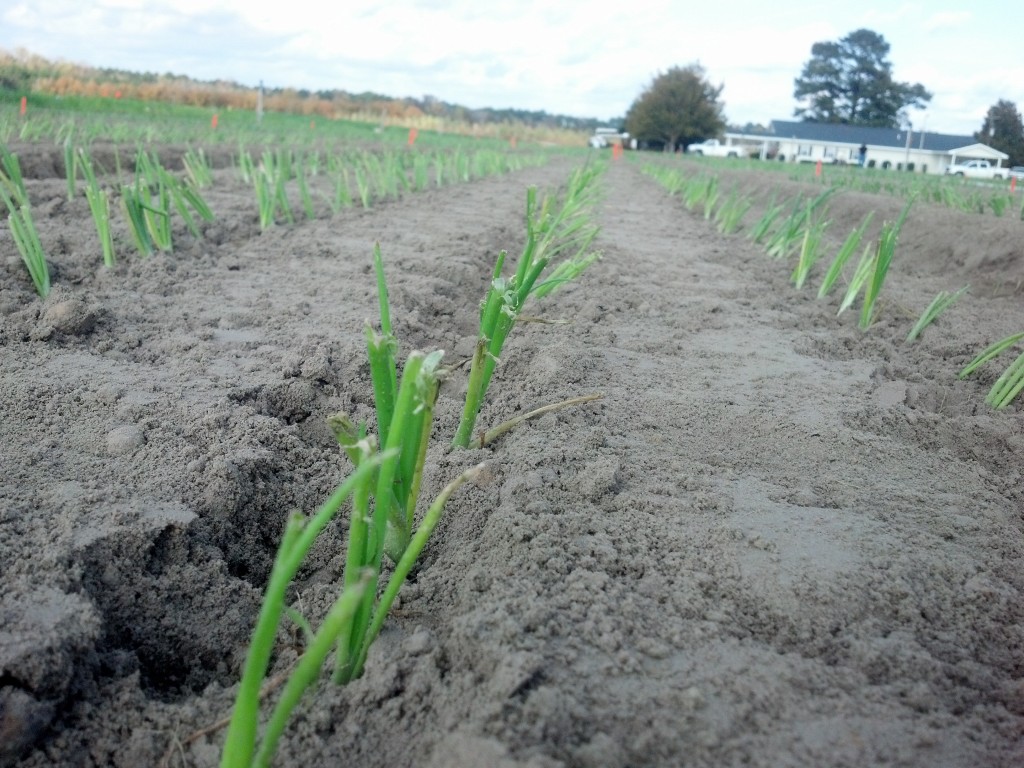This past December has had a latent impact on many ornamental plants and shrubs in the landscape. The late freeze that occurred earlier this year also played a role in how many of our landscape plants are currently looking. Here is a great write-up by Dr. Jean Williams-Woodward, UGA Plant Pathologist speaking on the impact the cold damaged that has occurred.
Greetings! I am getting a lot of calls, emails, and texts about woody shrubs and trees showing a lot of foliage browning and branch/stem dieback, particularly on boxwoods. I don’t know about you, but I really starting to hate boxwoods. There are multiple things that might be causing the dieback we are seeing on these plants. Much of the damage we are seeing on plants is likely due to the freeze damage from last December and/or earlier this spring.
If you are seeing plants with individual branch death (see the viburnum image), top dieback (see the magnolia image), or are slow to leaf out and grow, the problem is most likely freeze-damage. I have seen plants that were killed entirely or were killed to the ground, resulting in new growth developing from the crown (such as with hydrangeas). Boxwoods have been hit particularly hard, and most of the images I am being sent are of dying boxwoods. The attached images are boxwoods planted at the UGA Durham Horticultural Farm in Watkinsville. Earlier this year, I thought the plants came through the December freeze fairly well. Then, new growth flushed, and we had another freeze that killed the more tender shoots. The damage is directional, which is typical of freeze damage. Most often, freeze damage is seen on the west- to southwest-facing sides of plants. In the image, the side of the boxwood showing the most damage is facing southwest. There is still some damage on the other side, but this is because those shoots were probably younger and not hardened off and were more susceptible to damage. There is damage across all the boxwood in the field planting; however, some plants are showing more damage than others. The amount of damage just has to do with what stage of growth was present at the time of the freeze event. Those that were growing well and flushing new growth were most damaged. Those not showing as much damage now are actually more stressed and slower growing plants. Their growth developed after the freeze event.
Freeze damaged tissues often appear light-colored and bleached as in the boxwood images; however, on other plant species, damaged tissues will be brown or black and shriveled (see the viburnum). In some cases, cambial damage may have occurred that is preventing water and nutrient translocation in the plant. This is where you may see poor growth and branch or top dieback. In the attached image of four magnolia trees (Magnolia grandiflora ‘Little Gem’) planted in a row, there is directionality to the symptoms. The worst looking tree on the left is on the western side of the planting. The trees look better progressing toward the right and the eastern side of the planting. I believe freezing temperatures and cold winds that usually blow from west to east caused the problem. The tree on the left basically blocked the wind and protected the other trees. At this point, if you see trees and woody shrubs not doing well, showing branch dieback, having exploded/sloughing bark or vertical cracking on trunks, look to see if it is mostly on the western to southern exposure and assume it is due to freeze damage. There isn’t anything that can be done other than prune off the dead tissues but wait until axillary buds start to break before heavy pruning.
Most of the boxwoods images I’ve been sent are not as clear-cut to diagnose as my freeze-damaged plants at the Hort Farm. Most are showing extensive dieback or where one to several branches are browning and dying. I am assuming that most is cold damage, but some could be due to Volutella blight or Colletotrichum dieback. Both of these diseases are due to mostly secondary pathogens that infect weakened, often root disease affected, plants and cause small cankers on the stems that kills the foliage above it. There is no control for these diseases other than pruning out affected/dead branches and trying to alleviate plant stress. Fungicides may or may not help, and mostly won’t because the main problem is due to root issues, so they are generally not recommended.
One last thing on boxwoods for this update is that we are getting samples of boxwoods with boxwood blight infection. This disease can be extremely damaging to boxwood plantings. Look for black stem lesions, leaf spotting, and defoliation on affected parts of the plant to identify boxwood blight.
Below are pictures of cold damage on boxwoods, magnolia trees, and viburnum .
